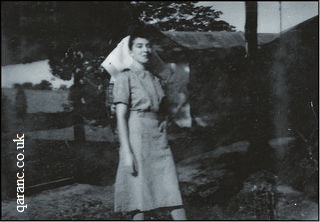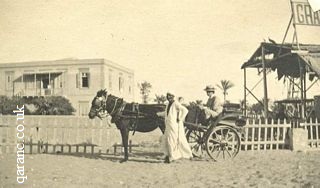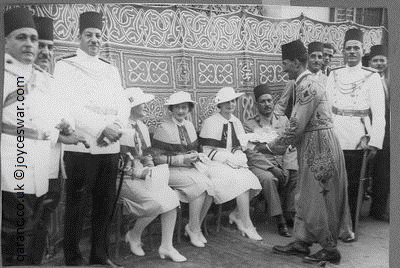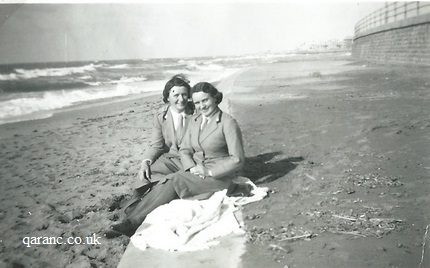» Site Map
» Home Page
Historical Info
» Find Friends - Search Old Service and Genealogy Records
» History
» QAIMNS for India
» QAIMNS First World War
» Territorial Force Nursing Service TFNS
» WW1 Soldiers Medical Records
» Field Ambulance No.4
» The Battle of Arras 1917
» The German Advance
» Warlencourt Casualty Clearing Station World War One
» NO 32 CCS Brandhoek - The Battle of Passchendaele
» Chain of Evacuation of Wounded Soldiers
» Allied Advance - Hundred Days Offensive
» Life After War
» Auxiliary Hospitals
» War Graves Nurses
» Book of Remembrance
» Example of Mentioned in Despatches Letter
» Love Stories
» Autograph Book World War One
» World War 1 Letters
» Service Scrapbooks
» QA World War Two
» Africa Second World War
» War Diaries of Sisters
» D Day Normandy Landings
» Belsen Concentration Camp
» Italian Sailor POW Camps India World War Two
» VE Day
» Voluntary Aid Detachment
» National Service
» Korean War
» Gulf War
» Op Telic
» Op Gritrock
» Royal Red Cross Decoration
» Colonels In Chief
» Chief Nursing Officer Army
» Director Army Nursing Services (DANS)
» Colonel Commandant
» Matrons In Chief (QAIMNS)
Follow us on Twitter:

» Grey and Scarlet Corps March
» Order of Precedence
» Motto
» QA Memorial National Arboretum
» NMA Heroes Square Paving Stone
» NMA Nursing Memorial
» Memorial Window
» Stained Glass Window
» Army Medical Services Monument
» Recruitment Posters
» QA Association
» Standard
» QA and AMS Prayer and Hymn
» Books
» Museums
Former Army Hospitals
UK
» Army Chest Unit
» Cowglen Glasgow
» CMH Aldershot
» Colchester
» Craiglockhart
» DKMH Catterick
» Duke of Connaught Unit Northern Ireland
» Endell Street
» First Eastern General Hospital Trinity College Cambridge
» Ghosts
» Hospital Ghosts
» Haslar
» King George Military Hospital Stamford Street London
» QA Centre
» QAMH Millbank
» QEMH Woolwich
» Medical Reception Station Brunei and MRS Kuching Borneo Malaysia
» Military Maternity Hospital Woolwich
» Musgrave Park Belfast
» Netley
» Royal Chelsea Hospital
» Royal Herbert
» Royal Brighton Pavilion Indian Hospital
» School of Physiotherapy
» Station Hospital Ranikhet
» Station Hospital Suez
» Tidworth
» Ghost Hunt at Tidworth Garrison Barracks
» Wheatley
France
» Ambulance Trains
» Hospital Barges
» Ambulance Flotilla
» Hospital Ships
Germany
» Berlin
» Hamburg
» Hannover
» Hostert
» Iserlohn
» Munster
» Rinteln
» Wuppertal
Cyprus
» TPMH RAF Akrotiri
» Dhekelia
» Nicosia
Egypt
» Alexandria
China
» Shanghai
Hong Kong
» Bowen Road
» Mount Kellett
» Wylie Road Kings Park
Malaya
» Kamunting
» Kinrara
» Kluang
» Penang
» Singapore
» Tanglin
» Terendak
Overseas Old British Military Hospitals
» Belize
» Falklands
» Gibraltar
» Kaduna
» Klagenfurt
» BMH Malta
» Nairobi
» Nepal
Middle East
» Benghazi
» Tripoli
Field Hospitals
» Camp Bastion Field Hospital and Medical Treatment Facility MTF Helmand Territory Southern Afghanistan
» TA Field Hospitals and Field Ambulances
Why Did QA Army Nurses Wear Grey Dresses and Berets QARANC Uniforms
Answer to the question why did QA army nurses have a grey uniform and wore grey ward dresses and a grey beret as part of the QARANC Uniform:
 Members of the Queen Alexandra's Royal Army Nursing Corps (QARANC) wore grey as part of their uniform. Female non commissioned officers and junior ranks wore grey ward
dresses. Female Nursing Officers wore a grey ward dress with a scarlet cape and white starched veil with the QARANC insignia in red at the base. Male and female QA's wore
a grey beret.
Members of the Queen Alexandra's Royal Army Nursing Corps (QARANC) wore grey as part of their uniform. Female non commissioned officers and junior ranks wore grey ward
dresses. Female Nursing Officers wore a grey ward dress with a scarlet cape and white starched veil with the QARANC insignia in red at the base. Male and female QA's wore
a grey beret.
A more modern and practical uniform is now worn by members of the QAs in UK hospitals with the Corps colours red, white, blue and grey.

The grey ward dress with red cape for nursing officers was first introduced by the second civilian Superintendent of Female Nurses for the Royal Victoria Military Hospital Netley Jane Deeble in 1869.
But why grey?
Living History Today has an interesting article about the Queen Alexandra's Imperial Military Nursing Service in which they write that the reason grey was chosen dates back to Florence Nightingale and her time in the Crimea:
She also chose the demure shade of mid grey of the nurses' dresses as it was a colour that was restrained and calm. She had proven during her time in the Crimea that wounded soldiers responded far better to a gentle and professional female carer than to the rough and ready, and often makeshift conditions that had formerly prevailed in the Army.
The article goes on to explain that Queen Alexandra decided that her nurses should retain Florence Nightingale's choice of grey in their dress.
Qaranc.co.uk were pleased to hear from former Registered Nurse and an ex member of the RAMC Robb Jenkins who helped by giving a possible answer to the question why members of the QAs wore grey:
I was interested to see the appeal for information as to the origin of the grey uniform. A possible explanation may be similar to the reason why the Confederate Army uniform was grey. This was because grey dye was the cheapest to obtain. No doubt the constraints imposed by the War Office at the time of inception made the cheapest option the only option.
Officers of the QARANC wear scarlet and we will also research the history and origins of this. If you are able to help then please do Contact Us.
It is possible to buy Queen Alexandra's Royal Army Nursing Corps (QARANC) uniforms, ward dresses, No. 2 dress and berets from online auction website Ebay where some private sellers and shops have many such QA items for sale.
Follow us on Facebook, Instagram and Twitter.

My PTSD assistance dog, Lynne, and I have written a book about how she helps me with my military Post Traumatic Stress Disorder, anxiety, and depression. I talk about my time in the QAs and the coping strategies I now use to be in my best health.
Along the way, I have had help from various military charities, such as Help for Heroes and The Not Forgotten Association and royalties from this book will go to them and other charities like Bravehound, who paired me with my four-legged best friend.
I talk openly about the death of my son by suicide and the help I got from psychotherapy and counselling and grief charities like The Compassionate Friends.
The author, Damien Lewis, said of Lynne:
"A powerful account of what one dog means to one man on his road to recovery. Both heart-warming and life-affirming. Bravo Chris and Lynne. Bravo Bravehound."
Download.
Buy the Paperback.

This beautiful QARANC Poppy Pin Badge is available from the Royal British Legion Poppy Shop.
For those searching military records, for information on a former nurse of the QAIMNS, QARANC, Royal Red Cross, VAD and other nursing organisations or other military Corps and Regiments, please try Genes Reunited where you can search for ancestors from military records, census, birth, marriages and death certificates as well as over 673 million family trees. At GenesReunited it is free to build your family tree online and is one of the quickest and easiest ways to discover your family history and accessing army service records.
More Information.
Another genealogy website which gives you access to military records and allows you to build a family tree is Find My Past which has a free trial.
Army Nursing Service Uniform
The Army Nursing Service uniform was introduced in 1888. The female only nurses wore a muslin cap, bonnet and veil. The nurses dress was a grey serge colour and had white linen cuffs and a white linen collar. Winter dresses were much heavier to give more warmth whilst the summer nursing dress was lighter so the members of the ANS could cope in the heat of countries like India.
Princess Christian Army Nursing Reserve Sister Uniform
By the time of the Boer War in 1899 to 1902 uniform had to change to adapt to extreme heat so that nurses to cope with tending to the wounded. For example the Princess Christian Army Nursing Reserve Sister uniform was a long white starched dress which reached down the nurses shoes. The dress had long sleeves with starched cuffs and a starched collar. The white dress soon got dirty with the blood of the wounded and the dust blown off the ground, but the skin of each nurse was protected by the sun and the white helped to reflect the heat. Rather than wearing traditional nurses hats or caps the nurses of the Boer war wore straw boater type hats. A nurse in a clean uniform and hat could be mistaken for a typical English lady on a day out at the river and must have bought added comfort and happy memories to the troops a long way from home
Starched Aprons
Lice had been rife in battlefields of the Boer War and World War One and nurses continued to wear starched aprons or pinafores because it was thought that the starch would stop the lice crawling from the patient to the nurse.
QAIMNS Uniform
The Queen Alexandra's Imperial Military Nursing Service (QAIMNS) ward dress uniform was much like that of modern day QARANC nursing sisters. They wore the long hat starched veil, the red cape with the QAIMNS cape badge on the right side with any ribbon awards on the left and a much longer grey dress with long sleeves. Scarlett cuffs with a white bottom were worn at the wrists.

The photo of QAIMNS uniform above is of Nursing Sister Sheila Cranch who served during the Second World War. See more of her photographs and read her memories on the Queen Alexandra's Imperial Military Nursing Service for India page.
QAIMNS and Reserve Uniform World War One
Scarlet Cape
The short QA scarlet cape had an embroidered Alexandra rose on the back and this fell between the shoulder blades of the Sister. It was stiff to the touch and rumour had it that this was so that it would be uncomfortable should the Sister fall asleep whilst on night duty and the pink Alexandra rose would wake her up! cited in the book The Roses of No Man's Land
Second World War QA Vi Cox has another explanation for why she and fellow Nursing Sisters wore the short red cape with their ward dresses. It was thought that it would be less distracting for the soldiers and patients as their bosoms would then be covered up!
This theory is also mentioned in Surviving Tenko: The Story of Margot Turner
Officially called tippets, the red capes were originally designed to hide the female sexuality from the ordinary 'Tommy' because army officers believed that a nurse's modesty needed protection from sexually deprived soldiers. With Margot's natural air of authority, however, it is unlikely that she needed such protection.
This theory is also cited in Medical Services in the First World War

Former Royal Air Force Regiment Gunner Jason Harper witnesses a foreign jet fly over his Aberdeenshire home. It is spilling a strange yellow smoke. Minutes later, his wife, Pippa, telephones him, shouting that she needs him. They then get cut off. He sets straight out, unprepared for the nightmare that unfolds during his journey. Everyone seems to want to kill him.
Along the way, he pairs up with fellow survivor Imogen. But she enjoys killing the living dead far too much. Will she kill Jason in her blood thirst? Or will she hinder his journey through this zombie filled dystopian landscape to find his pregnant wife?
The Fence is the first in this series of post-apocalyptic military survival thrillers from the torturous mind of former British army nurse, now horror and science fiction novel writer, C.G. Buswell.
Download Now.
Buy the Paperback.
If you would like to contribute to this page, suggest changes or inclusions to this website or would like to send me a photograph then please e-mail me.
QAIMNS Walking Out Uniform
When off duty and out on social occasions members of the QAIMNS wore a beautiful walking out dress with tight scarlet collar. The QA cape medal was worn on the right side with ribbons on the left. The walking out uniform outfit was completed with a boater type scarlet hat with scarlet, grey and white ribbon tied neatly at the front in a bow.
Below is a photo of Sister Holdgate wearing the walking out uniform of the QAIMNS during the First World War. Read more about Nursing Sister Holdgate on the British Military Hospital Egypt BMH Alexandria page.

This photo, from the collection of www.joyceswar.com shows the tropical walking out uniform worn in Cairo during World War Two. Note the two scarlet stripes on the sleeves denoting Nursing Sister.

See also the Assistant Matron Three Scarlet Stripes page.
There is another photo of the QAIMNS walking out uniform in the book Sub Cruce Candida: A Celebration of One Hundred Years of Army Nursing
Original QAIMNS uniforms were supplied by Shoolbreds in Tottenham Court Road until they went into liquidation in 1931. Thereafter the QA officers purchased their uniforms from Harrods cited in the book Queen Alexandra's Royal Army Nursing Corps (Famous Regts. S)

1941 Walking Out Uniform
The QA walking out uniform of scarlet and grey was in short supply by the end of 1942 because of clothes rationing in Britain. The Board of Trade recommended that Khaki uniform be worn by QAs to overcome rationing problems. Queen Mary and The Nursing Board disliked the idea though agreed because of the necessity for change.
Read about the First Time Nurses Wore Trousers AV Anti Vermin Battledress.
Scarlet and Grey Lanyard
The introduction of khaki uniform saw the introduction of the scarlet and grey lanyard to help preserve the special identity of the QAs (cited in the book Queen Alexandra's Royal Army Nursing Corps (Famous Regts. S)
The 50th anniversary ceremonial parade of the QAs saw the introduction of the QA grey uniform rather than the WRAC uniform with scarlet and grey lanyard (cited in the book Queen Alexandra's Royal Army Nursing Corps (Famous Regts. S)
The Jubilee Souvenir Programme can be read on the QA Nurses Training Centre page.
QARANC Lanyard
The QARANC lanyard is made up of two cords, one of scarlet and one of grey. It is a mandatory item of dress. Junior ranks will have their QA lanyard supplied from the Quarter Master (QM) department. QA Officers are required to purchase the QARANC lanyard. It is also available from the AMS Museum.
The QARANC lanyard is worn on the right shoulder, under the epaulette. The scarlet cord must be outermost, nearest to the arm with no loops hanging. Male members of the QARANC should fasten the loose end into the right breast pocket. The QARANC lanyard should be worn so that the upper end passes down through the lower loop. Female members of the QA's should wear a loop pattern lanyard around the right shoulder. This can then be modified under local arrangements.
The QARANC lanyard should be worn with No 2, 4, 6 or 14 dress. When the QA lanyard is worn in shirt sleeve order with a shirt that has a breast pocket then male pattern standard is to be worn. More information can be found in the Dress Regulations.
Grey Peaked Cap
The introduction of the QA grey peaked cap in January 1943 replaced the brimmed hats (cited in the book Queen Alexandra's Royal Army Nursing Corps (Famous Regts. S)
The makers of the Officers uniform hats, caps, the No. 1 dress hat and the service dress hat for the QARANC are Herbert Johnson whose website can be viewed at www.herbert-johnson.co.uk
If you sell QARANC uniforms and berets and have a shop or online store and would like it listed here for free then please contact me with information, your website and a photo.
Return To The QARANC Merchandise Index Page.
The December 1949 edition of Soldier Magazine ran a feature about the new No 1 QARANC uniform which was designed by Norman Hartnell, the Queen's dressmaker. It was to replace the service dress for walking out and ceremonial duties. The War Office revealed them alongside the new Women's Royal Army Corps uniforms. The QA uniforms became grey with scarlet shoulder pipings whilst the WRAC became bottle green. The designs were the same for both services, though officers wore barathea cloth whilst other ranks had serge. The new cap was described as a three decker hat, fitting close at the back and with a black japanned peak.
The article described the uniform as the jacket has three Hussar style cross cut seams across the front (to flatter the larger figure, according to one theory) and is cut away on the front like those of Scot's regiments. The pockets are flapless (one result, fewer buttons). The four gored skirt is a little longer than at present and hangs 15 inches from the ground. It has a centre seam in front to resemble a pleat.
The new beret was designed by Captain Edward Molyneux.
Rayon stockings of nocturne shade (transparent misty grey) were to be worn and other accessories were light grey shirt with grey ties, black leather shoes and gloves. The cloth belt was replaced by a scarlet rayon sash for junior ranks and a
His Royal Highness the King approved the new uniforms and they were also seen by the Queen, Queen Mary, the Princess Royal and Princess Elizabeth. (with thanks to Terry Hissey)
A new walking out dress (No. 3 dress) was introduced in 1954. This light weight clothing was made for those of the QARANC and WRAC working in warmer climates. It was white pique for women ordinary ranks and white sharkskin for officers. The peaked cap was worn and shoes were also white. (From Soldier Magazine June 1954).

Free Book.
The death of the Brotherhood will be avenged.
RAF gunner Jason Harper and a team of Special Air Service operators are enraged after the death of their brothers by a terrorist drone strike. They fly into south-eastern Yemen on a Black-op mission to gather intelligence and avenge the death of their comrades.
Can they infiltrate the Al-Queda insurgents' camp, stay undetected, and call down their own drone missile strike and get home safely?
Will they all survive to fight another day?
Operation Wrath is a free, fast-paced adventure prequel to the non-stop action The Fence series by military veteran author C.G. Buswell.
Download for free on any device and read today.
This website is not affiliated or endorsed by The Queen Alexandra's Royal Army Nursing Corps (QARANC) or the Ministry of Defence.
» Contact
» Advertise
» QARANC Poppy Pin
» Poppy Lottery
» The Grey Lady Ghost of the Cambridge Military Hospital Novel - a Book by CG Buswell
» The Drummer Boy Novel
» Regimental Cap Badges Paintings
Read our posts on:
Offers
» Army Discounts
» Claim Uniform Washing Tax Rebate For Laundry
» Help For Heroes Discount Code
» Commemorative Cover BFPS 70th anniversary QARANC Association

Present Day
» Become An Army Nurse
» Junior Ranks
» Officer Ranks
» Abbreviations
» Nicknames
» Service Numbers
Ministry of Defence Hospital Units
» MDHU Derriford
» MDHU Frimley Park
» MDHU Northallerton
» MDHU Peterborough
» MDHU Portsmouth
» RCDM Birmingham
» Army Reserve QARANC
Photos
» Florence Nightingale Plaque
» Photographs
Uniform
» Why QA's Wear Grey
» Beret
» Army Medical Services Tartan
» First Time Nurses Wore Trousers AV Anti Vermin Battledress
» TRF Tactical Recognition Flash Badge
» Greatcoat TFNS
» Lapel Pin Badge
» Army School of Psychiatric Nursing Silver Badge
» Cap Badge
» Corps Belt
» ID Bracelet
» Silver War Badge WWI
» Officer's Cloak
» QAIMNSR Tippet
» QAIMNS and Reserve Uniform World War One
» Officer Medal
» Hospital Blues Uniform WW1
Events
» Armed Forces Day
» The Nurses General Dame Maud McCarthy Exhibition Oxford House London
» Edinburgh Fringe Stage Play I'll Tell You This for Nothing - My Mother the War Hero
» Match For Heroes
» Recreated WWI Ward
» Reunions
» Corps Day
» Freedom of Rushmoor
» Re-enactment Groups
» Military Events
» Remembrance
» AMS Carol Service
» QARANC Association Pilgrimage to Singapore and Malaysia 2009
» Doctors and Nurses at War
» War and Medicine Exhibition
» International Conference on Disaster and Military Medicine DiMiMED
» QA Uniform Exhibition Nothe Fort Weymouth
Famous QA's
» Dame Margot Turner
» Dame Maud McCarthy
» Lt Col Maureen Gara
» Military Medal Awards To QAs
» Moment of Truth TV Documentary
» Sean Beech
» Staff Nurse Ella Kate Cooke
Nursing
Nursing Jobs Vacancies UK
International Nurses Day
International Midwife Day
Info
» Search
» Site Map
» Contact
» Other Websites
» Walter Mitty Military Imposters
» The Abandoned Soldier
We are seeking help with some answers to questions sent by readers. These can be found on the Army Nursing page.
» Find QA's
» Jokes
» Merchandise
» Mugs
» Personalised Poster
» Poppy Badges
» Stamp
» Teddy Bears
» Pin Badges
» Wall Plaques
» Fridge Magnet

